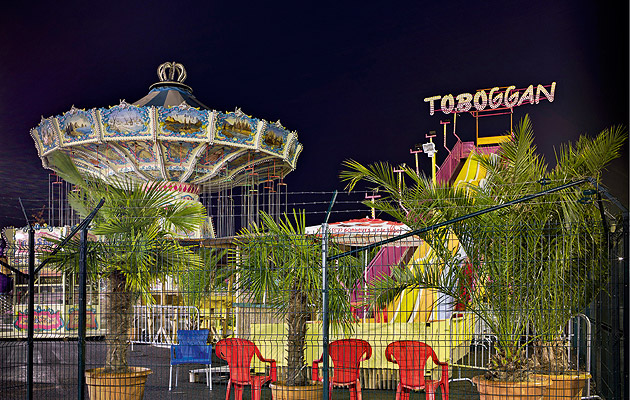|
image: Florian Kleineffenn |
||
|
AWP’s exhibition shows how the hours of darkness have become an urban space in their own right. Most illuminating, says Sam Jacob It’s not often that a show about architecture makes you actually think. Shows may be puzzling, informative, even, but usually they are so overwhelmed by ego, conceit or disciplinary concerns that they become self-centred bubbles divorced from the world they intend to describe. Paris la Nuit at the Pavillon de L’Arsenal, curated by the Paris-based architect AWP, is a high-concept architectural show, but it has a very clear idea of architecture’s role in the world. Its central tenet is that night, at least the night-time of the city, is not a natural phenomenon but an urban project and it’s this story that it tells through its “chroniques nocturnes”. Night, of course, is a product of the Earth spinning on its axis 149,600,000km from the sun. As the sun falls below Earth’s horizon, the planet turns its face to the darkness of space. But night is much more than a cosmological function; for mankind, as the curators of the show argue, night is a place as well as a time. The show looks at the way we have colonised the shadowy world of night using artificial light. It looks at the different ways we have used light to conceive and design the nature of earthly night. Using Paris as the case study – and where better than the City of Light – it talks about night as an architectural project: how night has become the site of culture, work, politics and leisure. We start with the night-time of the ancien régime. We see parties in the grounds of Versailles where night is a place of romantic fantasy, a place where identity becomes more malleable. Next to this: night as a political space, the space in which revolution ferments. Then on to how night became increasingly colonised by work as lights extended hours of labour around the clock. We see images of the construction sites that built Haussmann’s Paris lit by massive arc lights. And on again to how the same night was occupied by the avant-garde, offering alternatives to the fixed social structures of daytime; and how this bohemian, libertarian night was opened and commodified for mass entertainment in places such as the Moulin Rouge. The show explains the Eiffel Tower as a structure built around the experience of night, both as an elevated platform to watch the transformation of the city from day to night and also as an illuminated object in the city’s night sky. It ushers in an era where increasing commercial interests are etched into the night through large-scale neon signs that transform the experience of the city. The final part of the exhibition shows AWP’s own exploration of the Parisian night: long walks through swaths of urban fabric take in logistics centres, late night fast-food joints and nightclubs, all lit in the sodium glow of the contemporary city. This research also informs projects such as the practice’s 1km-long proposal for the landscaping of La Défense. Each thematic exploration shows how night has been transformed into different types of territory and how these night-spaces are places where the transformation of socio political life often occurs. The show is simple in its presentation: sets of images grouped around themes and arranged chronologically. There are no tricks of the light here, but it’s a persuasive argument nonetheless. And, while exploring the narrow band of the architectural nature of night, the exhibition sheds light on the nature of architecture itself. Indeed, after following the show’s story of the Parisian night, it’s disappointing to find daylight still flooding the gallery. Stepping out into the dull tyranny of the sun makes you long for the synthetic construction of night to flicker into life. Paris by Night, Pavillon de l’Arsenal, Paris, Until 6 October 2013 |
Words Sam Jacob |
|
|
||


















